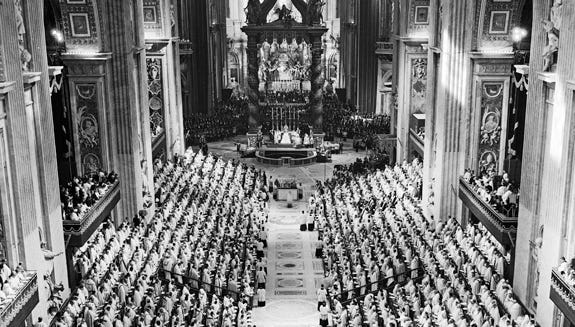Documenting the 'experts' of Vatican II
The challenges of identifying the 'periti' of the Second Vatican Council.
Sharon Kabel is a librarian, an independent researcher, and a Catholic.
Last summer, Kabel embarked on an ambitious project: attempting to catalog the 500 periti, or theological assistants, who took part in the Second Vatican Council.
In January of this year, Kabel released an open-source database and research library on The Periti of Vatican II.

